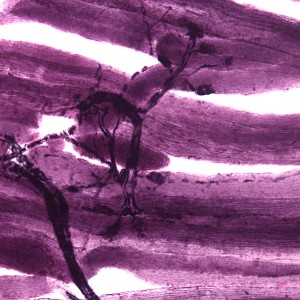Modeling Disease And Restoring SMN Expression: Leading-Edge Research in SMA

 “This is an exciting time for spinal muscular atrophy (SMA) patients, families and researchers,” indicated an article published in the journal F1000Prime Reports. “Not only are multiple clinical trials based on sound preclinical data completed, underway or planned, we also are rapidly gaining a better understanding of the disease process in both molecular and cellular terms.” The report, entitled “Spinal Muscular Atrophy: From Tissue Specificity to Therapeutic Strategies,” provides an excellent overview of the state of research and treatment success for the most frequent genetic cause for infant and toddler deaths.
“This is an exciting time for spinal muscular atrophy (SMA) patients, families and researchers,” indicated an article published in the journal F1000Prime Reports. “Not only are multiple clinical trials based on sound preclinical data completed, underway or planned, we also are rapidly gaining a better understanding of the disease process in both molecular and cellular terms.” The report, entitled “Spinal Muscular Atrophy: From Tissue Specificity to Therapeutic Strategies,” provides an excellent overview of the state of research and treatment success for the most frequent genetic cause for infant and toddler deaths.
Drs. Daniel M. Iascone, Christopher E. Henderson, and Justin C. Lee of Columbia University Medical Center acknowledge that few advances in research and treatment would be possible without appropriate animal models. The most commonly used animal model, SMNΔ7, which has a genetic mutation in the gene encoding survival motor neuron (SMN) protein, closely resembles the neuromuscular phenotype of human patients. However, the model has dissimilar peripheral disease manifestations. For example, the majority of SMNΔ7 mice exhibit cardiac defects, although most human patients are born without congenital heart disease.
Although SMA is commonly thought of as a disease of motor neurons, SMN is actually important to a variety of central and peripheral cell types. Other neuronal cells show decreased growth and are less able to return signals to the central nervous system. Muscle cells, which are in close proximity to neurons at neuromuscular junctions, also do not thrive well with SMN deficiency.
Restoring SMN expression by administering genetic vectors that carry genetic material to produce SMN seems to be the most logical means of treating SMA, but it may not be effective for all patients. To sidestep this barrier, researchers are developing treatments that block the negative effects of molecular pathways affected by an SMN deficiency. One candidate is stasimon, which is required for proper communication between neurons. Restoring stasimon levels may be a feasible treatment option.
[adrotate group=”3″]
Another means of treatment considers delivering neuroprotective agents to prevent further motor neuron degeneration. Olesoxime, known as TRO19622 and developed by Trophos, underwent a successful phase 2/3 clinical trial involving 165 SMA patients in Europe. Patients showed signs of delayed motor function loss when treated with olesoxime compared to placebo.
Not all patients show significant disease progression, with some patients showing slowed degeneration. Yet they continue to experience significant motor system impairment, despite treatment with an agent such as olesoxime, and require enhanced regenerative treatments for the neuromuscular system. Studies have assessed the feasibility of increasing the size of remaining muscle fibers or replacing degenerated myofibers altogether, but research is still in the early stages.
“Many challenges remain in validating and developing these regenerative medicine approaches to SMA,” wrote the authors. “However, the applicability of these strategies goes well beyond SMA and they would seem an important strand of any long-term strategy for neurodegenerative disease.”







